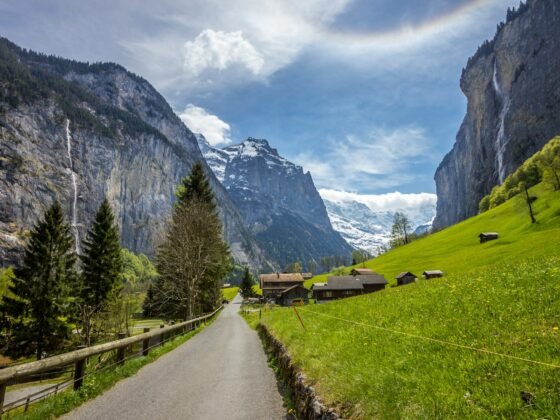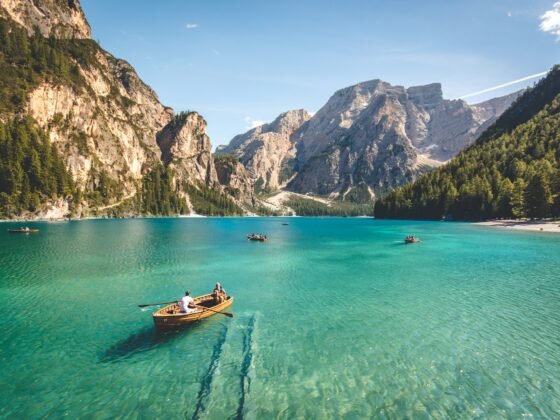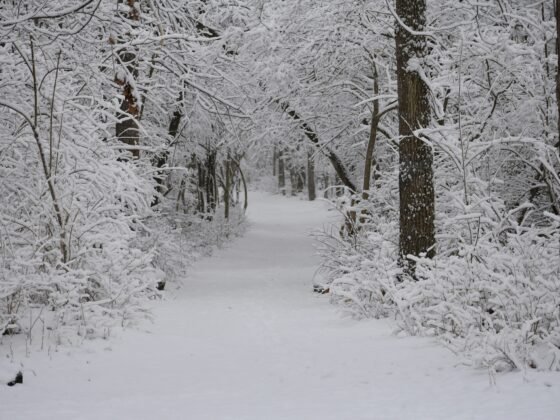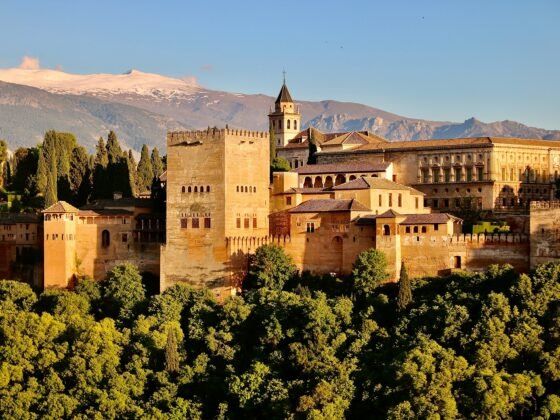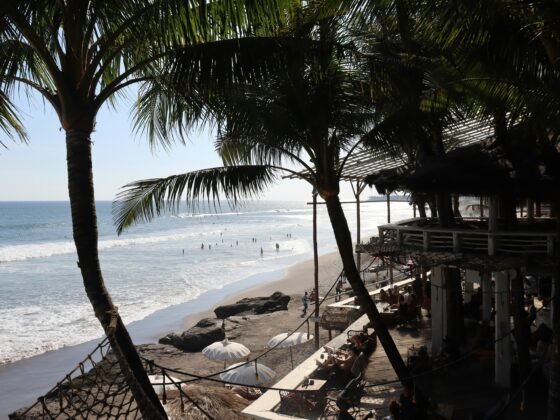Mexico Adventure Travel Guide: Ideas and Inspiration
PureTravel Says: “As a travel destination, most people associate Mexico with tequila, guacamole, mariachi bands, unsafe drinking water and wild stories about Mexican jails and ‘federales’. Of course there’s much more to Mexico than these stereotypes such as the cultural and eco-tourism industries which are thriving and offer unique experiences to visitors. Swimming with dolphins, zip-lining through the forest canopy, ATV riding, snorkelling and horseback riding on the beach are just a few of the activities on offer.”
-----------------------------------------------------------
History
Originally inhabited by various indigenous tribes of Amerindians, among them the civilizations of the Aztecs and the Mayans, the region was invaded by Spain in 1519 and by 1535, it was named the Viceroyalty of New Spain and had already become Spain’s most populous colony. Spanish rule lasted almost 300 years, more than enough time for the language, culture, religion and traditions to firmly take root.
The United States of Mexico, or simply “Mexico”, is part of the North American continent and is the fifth largest country in the Americas and the 14th largest in the world, measuring around 2 million sq. kilometers (over 760,000 sq. miles). In terms of population, its capital city, Mexico City, is among the largest cities in the world and with a total population of around 108 million inhabitants, the country is the world’s 11th most populous. The country is divided into 32 “united” states. Mexico is bordered by the United States to the north, and the Central American countries of Guatemala and Belize in the southeast. Its long and varied coastline borders the Caribbean Sea, Pacific Ocean and Gulf of Mexico, where several small islands are also Mexican land.
-----------------------------------------------------------
Culture
Mexican people are said to have a “mañana” (tomorrow) attitude and while visitors may catch a glimpse of Mexican people enjoying a “siesta” (nap) in a hammock on a hot, humid afternoon, a visit to bustling Mexico City, the country’s capital and largest city, makes it clear that Mexico is also a country to be taken seriously.
Mexico’s constitution does not name an official language, although Spanish is spoken by almost everyone, and the country has the largest Spanish speaking population in the world. In addition to Spanish, there are numerous indigenous languages spoken, such as Nahuatl and Yucatec Maya.
-----------------------------------------------------------
When to Go
The Tropic of Cancer passes through Mexico, and therefore the country has both temperate and tropical climate zones. That said, there are four mountain ranges in Mexico (Sierra Madre Oriental, Sierra Madre Occidental, Sierra Madre del Sur and the Sierra Nevada), and as a result, parts of Mexico reach altitudes of 5,000 meters and higher, and therefore experience cooler climates.
Snowbirds have discovered that Mexico’s climate is ideal in the wintertime, making this a popular time to visit. Summertime can be quite hot and often times rainy, and in parts of the country such as the Caribbean coast, extremely humid.
-----------------------------------------------------------
Top Tips - Know Before You Go
As a rule, passports are required to enter Mexico and to re-enter the United States. While in certain circumstances, visitors are permitted to re-enter the United States from Mexico with a WHTI-compliant document, valid driver’s license and a birth certificate, a passport is by far the best document for international travel and everyone wishing to travel to Mexico should be in possession of a valid passport. A tourist visa is not required for citizens of the US and most European nations. However, citizens of other countries should check with the Mexican embassy or consulate in their home country regarding entry requirements and visas.
The monetary unit is the Mexican peso (MXN), which equals 100 centavos. US dollars are also widely accepted, although change is often returned in pesos. When traveling to Mexico and using US dollars, it is recommended to bring bills in smaller denominations ($5, $10, $20), so you don’t end up with too many pesos at the end of your visit. Cash, especially in US dollars, is always handy for taxi fares, and bartering with vendors on the beaches and in the open markets. Banks and ATM machines are readily found, and some luxury hotels have ATMs that dispense US dollars.
To prevent the dreaded “Montezuma’s Revenge” (diarrhoea), prudent advice is to avoid ingesting tap water and ice, except in the most upscale restaurants or luxury resorts which use sophisticated filtration and purification systems. Drink bottled water, peel all fruits and avoid foods from street vendors and open-air markets as well as foods that have been rinsed (such as salads). Be careful as well with cocktails such as margaritas, that are blended with, or served over, ice, and instead stick to the equally refreshing Mexican cerveza (beer). That said, the water quality has greatly improved in recent years, and many popular resort areas are now considered quite safe for eating and drinking.
While Mexico is considered a safe tourist destination, it is recommended to practice common sense and keep wallets and passports concealed and be mindful of your surroundings.
-----------------------------------------------------------
Top Tips - Visitors Should Bring
- A GSM mobile phone, although roaming fees in Mexico are quite high. Calling cards are affordable alternatives, and are easily found.
- Mosquito repellent.
- Sun protection.
- The voltage in Mexico is the same as in US and Canada. Visitors from other countries will need a converter / adapter for 110V power and for outlets accepting two blade plugs.
- Mexico follows the same time as U.S. central to western time (UTC – 8 to -6) and also observes daylight savings time.
-----------------------------------------------------------
Travel
The airport in Mexico City, called Benito Juarez International Airport (MEX), is the largest in Latin America and the 44th largest in the world. On the east coast, fly into Cancun International Airport (CUN) to visit the city of Cancun, the Riviera Maya, quaint Playa del Carmen or the island of Cozumel. In the west, choose Acapulco’s Alvarez International Airport (ACA), Puerto Vallarta’s Gustavo Diaz Ordaz International Airport (PVR), or the Los Cabos International Airport (SJD), close to Cabo San Lucas, on the Baja Peninsula.
Air travel within Mexico is common and convenient, as distances are long and flights are frequent, with plenty of domestic airlines to choose from.
The country also possesses an extensive network of paved roads and freeways, some of which are modern and in excellent condition, while others are less so.
Whereas train travel is not recommended (the majority of trains are used for freight), there is a well-developed bus system.
-----------------------------------------------------------
Holidays In Focus
-----------------------------------------------------------
Holiday Highlights
Mexico is among the top ten most popular visitor destinations in the world and tourism is an important sector of the economy. The development of Mexico’s tourism industry and infrastructure has brought US quality facilities and services.
The most popular and developed tourist destinations are on the coastline, including Acapulco, Cancún, Cozumel, Ixtapa/Zihautanejo, Los Cabos, Manzanillo, Mazatlán and Puerto Vallarta. Some visitors may find these areas over-crowded and overly commercial and admittedly they can be a turn-off, especially on cruise ship days. On a positive note, these areas do have very well developed tourism infrastructures; a wide range of accommodation, readily available transportation, a broad selection of leisure activities and cultural experiences. English is widely spoken and safe drinking water is found in many establishments.
-----------------------------------------------------------
Riviera Maya and Cozumel
South of Cancun, on the shores of the Caribbean on Mexico’s east coast, is an area known as the Riviera Maya. While this area has long been a popular cultural destination centering on the ruins of the ancient Mayan communities of Tulum, Coba, Uxmal and Chichen Itza, it has recently turned into an eco-tourism hotspot.
Unique to this area of Mexico is a type of sinkhole called a cenote. These limestone pools are filled with fresh water and visitors can swim, snorkel and cave dive in the cenotes. Some tour operators offer combination adventure experiences that include cycling, zip-lining and cenote swimming.
Also located on the Riviera Maya is a natural water park called Xel-Ha which is a protected lagoon of the Caribbean where visitors can experience the marine environment first hand. In efforts to protect the fragile marine environment and the area’s natural resources, most water sports attractions are now asking patrons to wear bio-degradable sun protection.
Off the coast by the quaint, European style village of Playa Del Carmen is the island of Cozumel, a scuba divers paradise where the world’s second largest reef, the Great Mayan Reef, is found. Highlights are the Santa Rosa Wall and the Palancar Reef. Cozumel is also home to the Parque Natural Chankanaab, which is a protected body of water that is connected to the sea by an underground tunnel and consists of a landlocked pool surrounded by lush tropical vegetation and featuring underwater caves and inland reefs, as well as a botanical garden.
Cozumel also features the ecological reserve park of Punta Sur, with pristine beaches and dunes, and lush jungle mangroves and marshes. Over 50 species of aquatic birds can be seen there, as well as marine turtles and yellow crocodiles.
-----------------------------------------------------------
Puerto Vallarta, Nuevo Vallarta and Riviera Nayarit
Situated on Banderas Bay, the second largest bay in the western hemisphere is the city of Puerto Vallarta, a major resort and cruise ship destination consisting of Puerto Vallarta, Nuevo Vallarta and the Riviera Nayarit. In addition to beautiful beaches, the area around Puerto Vallarta is full of forests, rivers and waterfalls.
If you’ve seen the 1963 movie “The Night of the Iguana”, then you’ve seen Puerto Vallarta’s Playa Mismaloya. Also recognizable are the emblematic rock formations called Los Arcos (the arches), which rise out of the water and are an excellent snorkelling and diving location. Off shore are world class sport fishing waters, and the International Sailfish Fishing Tournament takes place there each November.
For thrill-seekers, zip lining is offered about 45 minutes from town in an ecological reserve called Vallarta Adventure. Participants travel from platform to platform, suspended at heights ranging from 4–20 meters.
Horseback riding is also available at Las Animas, Playa del Oro and Yelapa.
-----------------------------------------------------------
Ruins of Palenque and Bonapak
Away from the tourist resorts is a hard-to-reach, but well worth the trek, archaeological site of Middle and Late Classic Mayan culture in Palenque, in the state of Chiapas. To reach Palenque, one should fly into Villahermosa, in the state of Tabasco. The site was discovered in the 1840’s and the main structures of the ancient city are said to date back as far as 300–1000AD. Not to be missed are the Temple of the Scull, the Palace, the Inscription Temple which leads to the King’s Tomb, and the aqueduct Rio Otulum.
About 100 miles from Palenque is Bonampak and it’s said that a local guide is necessary, as the site is relatively hard to find. Bonampak is known for its beautiful Mayan murals.
-----------------------------------------------------------
Guanajuato and San Miguel De Allende
The colonial town of San Miguel de Allende, situated in the mountains of central Mexico, is an artists’ community and popular ex-patriot enclave in the state of Guanajuato, about 150 miles from Mexico City. Like a picture postcard, San Miguel is for those seeking culture and history, and leisurely strolls on the cobblestoned streets.
Less of a visitor attraction than San Miguel de Allende, the city of Guanajuato is also worth visiting, having been declared a UNESCO World Heritage Site. One of the country’s former silver-mining centers, the city is full of colonial charm and beautiful architecture and annually hosts the International Cervantino Festival, Mexico’s most important showcase of performing arts. Guanajuato was the birthplace of famous artist Diego Rivera (who was married to Frida Kahlo) and his birth home is now a museum.
-----------------------------------------------------------
Classic Itineraries
- Explore the cenotes on the Riviera Maya and visit the ancient cities of Tulum and Chichen Itza.
- Scuba dive off the island of Cozumel.
- Fish and zipline in Puerto Vallarta.
- Uncover the ruins of Palenque and Bonampak.
- Stroll through San Miguel de Allende and Guanajuato.
-----------------------------------------------------------
UNESCO World Heritage Sites
There are 32 World Heritage Sites in Mexico;
Natural sites;
- Sian Ka'an
- Whale Sanctuary of El Vizcaino
- Islands and Protected Areas of the Gulf of California
- Monarch Butterfly Biosphere Reserve
- El Pinacate and Gran Desierto de Altar Biosphere Reserve
Cultural Sites;
- Historic Centre of Mexico City and Xochimilco
- Historic Centre of Oaxaca and Archaeological Site of Monte Albán
- Historic Centre of Puebla
- Pre-Hispanic City and National Park of Palenque
- Pre-Hispanic City of Teotihuacan
- Historic Town of Guanajuato and Adjacent Mines
- Pre-Hispanic City of Chichen-Itza
- Historic Centre of Morelia
- El Tajin, Pre-Hispanic City
- Historic Centre of Zacatecas
- Rock Paintings of the Sierra de San Francisco
- Earliest 16th-Century Monasteries on the Slopes of Popocatepetl
- Historic Monuments Zone of Querétaro
- Pre-Hispanic Town of Uxmal
- Hospicio Cabañas, Guadalajara
- Archaeological Zone of Paquimé, Casas Grandes
- Historic Monuments Zone of Tlacotalpan
- Archaeological Monuments Zone of Xochicalco
- Historic Fortified Town of Campeche
- Ancient Maya City of Calakmul, Campeche
- Franciscan Missions in the Sierra Gorda of Querétaro
- Luis Barragán House and Studio
- Agave Landscape and Ancient Industrial Facilities of Tequila
- Central University City Campus of the Universidad Nacional Autónoma de México (UNAM)
- Protective town of San Miguel and the Sanctuary of Jesús Nazareno de Atotonilco
-Camino Real de Tierra Adentro
- Prehistoric Caves of Yagul and Mitla in the Central Valley of Oaxaca
-----------------------------------------------------------
Festivals, Events and Anniversaries in 2014
This year Colima in Mexico hosts the American Capital of Culture 2014 - Colima is dubbed the ‘City of Palms’ thanks to the multitude of tropical trees that fringe this city on Mexico's central Pacific coast. It's most notable for its superb eco travel facilities – visitors can go volcano hiking and bird spotting in the morning, then tackle the superb Pacific surf in the afternoon, before settling back with a margarita and watching the sun set in the evening.
-----------------------------------------------------------
Public Holidays, Events and Festivals
1 January - New Year's Day / Año Nuevo
5 February - Constitution Day / Día de la Constitución
21 March - Benito Juárez's birthday / Natalicio de Benito Juárez
1 May - Labor Day / Día del Trabajo
16 September - Independence Day / Día de la Independencia
20 November - Revolution Day / Día de la Revolución
25 December - Christmas / Navidad
-----------------------------------------------------------
Travel Resources
By Julie Bowman


